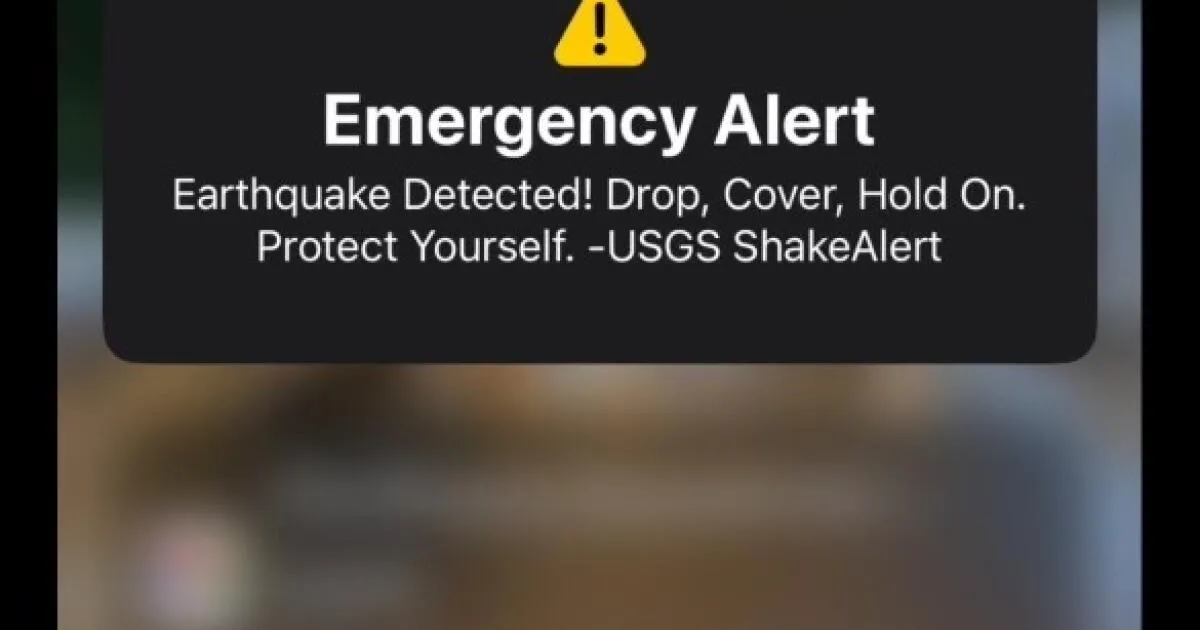
On Monday, a magnitude 5.2 earthquake struck near the mountain town of Julian in San Diego County, marking another success for California’s earthquake early warning system. Residents in various locales reported receiving alerts on their phones before they felt any shaking, providing critical lead time that can be essential during significant seismic events. One enthusiastic resident shared their experience on social media, stating, “That was awesome! GREAT EARLY WARNING!!!” They received the alert near downtown San Diego several seconds prior to the primary shaking wave.
Thanks to the technology behind the early warning system, alerts reached some areas of Los Angeles even before the shaking arrived. Because seismic waves travel slower than the speed of modern communication, this advance notice can be crucial. Fortunately, no major damage or injuries were reported following the temblor.
The ShakeAlert earthquake warning system, managed by the U.S. Geological Survey (USGS), operates across California, Oregon, and Washington state. It relies on an extensive network of seismic sensors that detect shaking instantly. This information is then processed by computers to determine whether an alert should be issued and to which locations.
Residents in various cities including Camarillo, Manhattan Beach, Palm Springs, Riverside, and southern Orange County reported receiving timely alerts. One user from Corona Del Mar mentioned receiving the alert “about 5-10 seconds before a big jolt,” while another from Palm Springs stated, “I got the alert 1 second before I felt it! I’m extremely impressed.” Such feedback highlights the importance of the early warning system in enhancing public safety.
Even geologists at the California Geological Survey in Los Angeles received early notifications, allowing them to brace for the shaking. This system not only informs the general public but also keeps professionals prepared for seismic activity.
One of the most effective methods for receiving earthquake early warnings is by downloading the MyShake app, a free application developed by UC Berkeley in collaboration with the USGS and the California Governor’s Office of Emergency Services. The app is compatible with Android devices and can also be downloaded on iPhones, iPads, and Mac computers. Additionally, Android phones come equipped with a built-in earthquake early warning application.
In fact, over half a million Californians received early warnings through MyShake for a magnitude 7 earthquake that occurred off the Humboldt County coast and a magnitude 5.7 quake southeast of Reno. San Diego County also offers the SD Emergency app, which features the ShakeReadySD earthquake early warning tool, enhancing public readiness.
While many residents appreciated the alerts, some reported feeling anxious. One individual expressed fear after receiving guidance to “Drop. Cover. Hold on,” despite being a long-time earthquake survivor. However, as individuals adapt to the alerts, this anxiety tends to diminish, with many recognizing the alerts as crucial indicators for protective actions.
Earthquake early warnings are becoming increasingly common in seismically active regions worldwide, including countries like Japan, Mexico, and Taiwan. Android devices equipped with MyShake or ShakeReadySD apps have the lowest threshold for receiving alerts, triggering notifications for quakes of magnitude 4.5 or higher. These alerts indicate that shaking is expected to be “weak” at the user’s location, a sensation similar to vibrations from a passing truck.
For those without smartphones or early warning apps, alerts can still be received via the Wireless Emergency Alert system, which functions similarly to Amber Alerts. However, these alerts typically provide less information than app-generated messages. To enhance the speed and accuracy of emergency alerts, iPhone users can enable “local awareness” in their settings.
MyShake recommends users open the app at least once a month to ensure it remains active and ready to receive alerts. This can be easily achieved by tapping notifications about significant global earthquakes, which occur bi-weekly.
MyShake is now available in six languages: English, Spanish, Tagalog, Korean, Vietnamese, and Chinese (Mandarin). The app automatically selects the primary language based on the device's settings, though iPhone users can adjust the language preference through the app settings.
Ultimately, the advancements in California’s earthquake early warning system not only demonstrate technological progress but also emphasize the importance of public preparedness and safety in seismic zones.